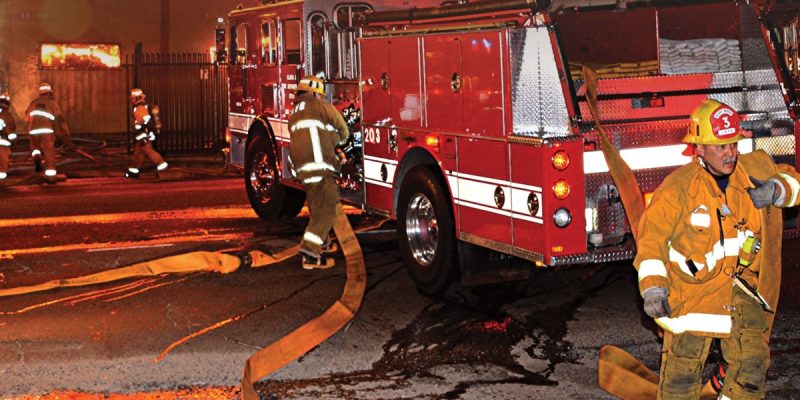Fire Division vs Group: Understanding Their Roles in Firefighting Operations

In firefighting and emergency response, the success of an operation depends heavily on effective organization and coordination. Terms like fire division and fire group are used to structure teams and resources, ensuring a clear chain of command and efficient task execution.
While both terms are critical to Incident Command System (ICS) operations, they have distinct purposes and functions. This article will break down the differences between fire division vs groups, their roles in firefighting, and how they contribute to emergency response success.
What Is a Fire Division?
A fire division is a geographic designation within a firefighting operation. It divides the incident area into manageable zones, ensuring resources are allocated and coordinated effectively across different physical locations.
Key Characteristics of a Fire Division
- Geographically Based: Focuses on specific locations or areas of the incident.
- Designation: Often labeled as Division A, B, C, etc., based on direction (e.g., north, south) or physical landmarks.
- Responsibility: Manages all firefighting and rescue activities within its assigned area.
Example:
During a large building fire, Division A may handle operations on the north side of the structure, while Division B manages the south side.
What Is a Fire Group?
A fire group, on the other hand, is task-oriented. It focuses on specific functional responsibilities rather than geographic areas. Groups are formed to address particular needs during an incident, such as ventilation, search and rescue, or water supply.
Key Characteristics of a Fire Group
- Function-Based: Centers on a specific task or operational goal.
- Designation: Named based on the assigned task (e.g., Ventilation Group, Search Group).
- Responsibility: Completes the assigned function regardless of the geographic location.
Example:
A Ventilation Group may work across different divisions to ensure proper airflow and smoke control throughout the building.
Fire Division vs. Group: Key Differences
| Aspect | Fire Division | Fire Group |
| Focus | Geographic area. | Specific task or function. |
| Scope | Manages all operations within a location. | Handles assigned tasks across locations. |
| Designation | Named by letters or directions (e.g., Division A). | Named by task (e.g., Ventilation Group). |
| Command Structure | Led by a Division Supervisor. | Led by a Group Supervisor. |
| Flexibility | Limited to a physical area. | Operates across multiple divisions if needed. |
How Divisions and Groups Work Together
In large-scale incidents, both divisions and groups are deployed to ensure operational efficiency.
Coordination Between Divisions and Groups
- Divisions: Focus on managing the geographic zone, ensuring resources are effectively deployed within the area.
- Groups: Work across multiple divisions, providing specialized support or fulfilling specific operational needs.
Example Scenario:
During a high-rise building fire:
- Division A handles the north side of the building, and Division B manages the south side.
- The Ventilation Group works on all floors to clear smoke, while the Search Group conducts rescues throughout the building.
This structure ensures every aspect of the incident is covered without duplication or oversight.
Advantages of Using Divisions and Groups
Improved Coordination
Dividing tasks and locations helps streamline operations, reducing confusion during high-pressure situations.
Efficient Resource Allocation
By assigning teams to specific areas (divisions) or tasks (groups), resources can be deployed more effectively.
Enhanced Safety
Clear command structures minimize risks by ensuring every firefighter knows their responsibilities and chain of command.
Scalability
This system works for both small-scale incidents and large, complex emergencies.
When to Use Divisions vs. Groups
Use Fire Divisions When:
- The incident covers a large geographic area.
- Teams need to focus on managing specific zones.
- Separate teams must handle different sides or sections of a structure.
Use Fire Groups When:
- Specific functional tasks (e.g., rescue, ventilation) need to be prioritized.
- Teams must work across multiple geographic zones.
- A unified approach to a specific problem (e.g., smoke control) is required.
Conclusion
The distinction between fire divisions and groups is essential for effective firefighting operations. While divisions manage specific geographic areas, groups focus on functional tasks that may span multiple locations. This dual structure ensures seamless coordination, efficient resource allocation, and enhanced safety during emergency responses.
Whether you’re part of a fire department or simply interested in understanding how firefighting operations work, recognizing the roles of divisions and groups is key to appreciating the complexities of incident management.
Need a clearer structure for your emergency operations? Implement a division and group system for better coordination and success!
FAQs
1. What is the primary difference between a fire division and a group?
A division is focused on geographic areas, while a group is task-oriented and addresses specific operational needs.
2. Can a group work in multiple divisions?
Yes, groups often operate across divisions to fulfill their specific functions.
3. Who oversees fire divisions and groups?
Each division and group is led by a supervisor who reports to the Incident Commander.
4. Are divisions and groups used in every firefighting operation?
They are typically used in large-scale or complex incidents where clear organization is crucial.
5. How are divisions and groups named?
Divisions are named alphabetically (e.g., Division A) or by direction (e.g., North Division), while groups are named by their function (e.g., Ventilation Group).
Also read: De Novo Market: Understanding Its Meaning and Impact on Business Strategy











